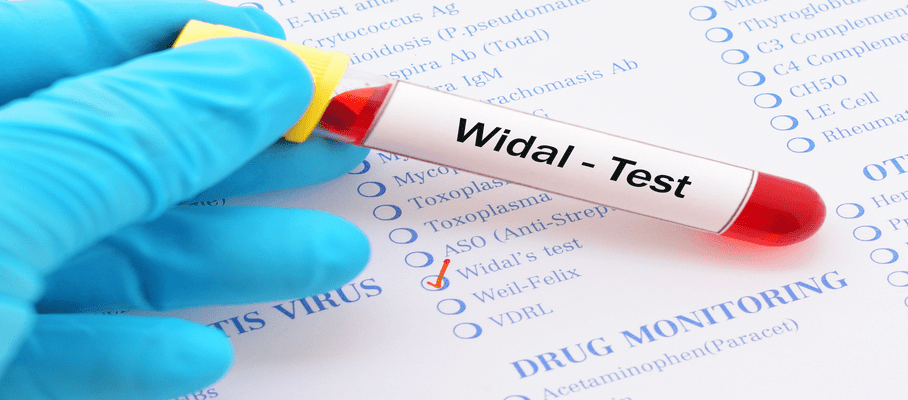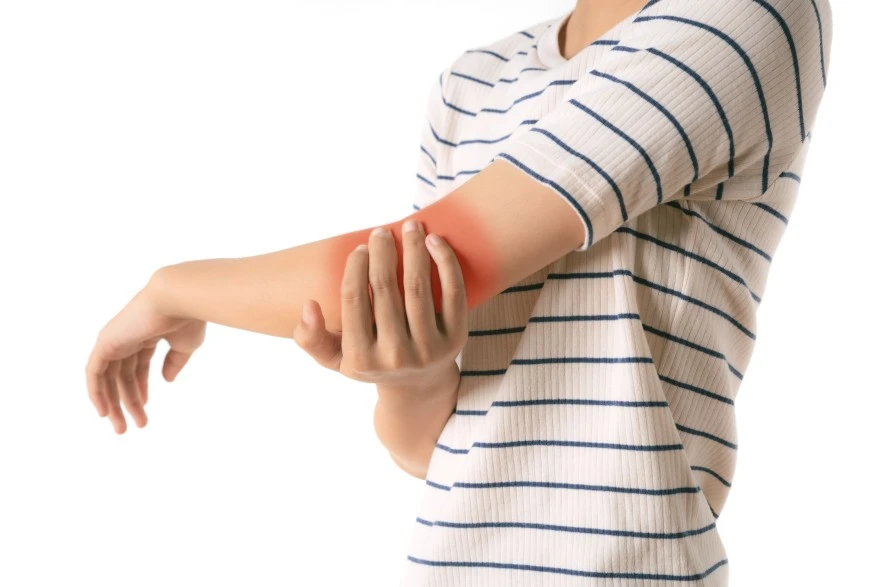Preventive Healthcare
Allergy Skin Testing: Know What’s Causing Your Reactions

Table of Contents
- What Is Allergy Skin Testing?
- Why Is Allergy Testing Important?
- Common Allergens That Can Be Tested
- Types of Allergy Skin Tests
- Who Should Get an Allergy Skin Test?
- When is an Allergy Skin Test Performed?
- How to Prepare for the Test
- What Should I Expect Before an Allergy Skin Test?
- How Long Does the Test Take?
- What Are the Risks of an Allergy Skin Test?
- What Are the Possible Results of the Allergy Skin Tests?
- What Happens After the Test?
- Alternatives to Skin Testing (Blood Tests, etc.)
- When to Consult an Allergist
- Final Thoughts
- FAQs
What Is Allergy Skin Testing?
If you suffer from allergies, an allergy skin test can be a game-changer. This diagnostic procedure involves exposing your skin to potential allergens to identify the specific substances triggering your symptoms.
An allergy skin test works by eliciting a small, controlled allergic response in a safe medical setting. When an allergen is applied to the skin, the immune system releases histamine and other chemicals, causing localised redness, swelling or itching if you're allergic. This visible reaction helps confirm what's behind your sneezing, watery eyes, hives or other telltale signs of an allergic reaction.
Why Is Allergy Testing Important?
Getting an allergy skin test is a crucial step in managing your allergies effectively. Without identifying the precise triggers, it's difficult to avoid exposure and prevent symptoms. Allergy testing provides valuable insights into your unique allergen profile, paving the way for targeted treatment.
For example, if a food allergy test reveals you're allergic to peanuts, you can take steps to eliminate them from your diet and carry an EpiPen for emergencies. If an allergy skin test shows you react to pollen, you can minimise outdoor time during peak season and start immunotherapy. Knowing your triggers empowers you to take control of your allergies and improve your quality of life.
Common Allergens That Can Be Tested
An allergy skin test can check for a wide range of potential allergens, from environmental irritants to food proteins. Some of the most common culprits include pollen from trees, grasses and weeds; dust mites; pet dander from cats and dogs; mould spores; foods like peanuts, tree nuts, milk, eggs, soy and wheat; insect venoms from bees, wasps and fire ants; latex; or medications such as penicillin.
During a typical allergy skin test procedure, you may be simultaneously tested for 10-50 different allergens based on your symptoms and medical history. This allows for a comprehensive evaluation to uncover both expected and surprising triggers.
Types of Allergy Skin Tests
There are three main allergy skin test types: prick (scratch), intradermal, and patch tests. Each has a specific purpose and procedure.
Skin Prick (Scratch) Test
This is the most common allergy skin test, often used to check for allergies to pollen, mould, pet dander, dust mites and foods. It involves placing drops of allergen extracts on the skin. Results typically appear within 15-20 minutes, with a positive reaction showing as a red, itchy bump resembling a mosquito bite.
Intradermal Test
An intradermal test involves injecting a small amount of allergen extract into the skin. This test is commonly used for allergies to medications like penicillin or insect venoms. A positive reaction usually appears as a raised, red bump within 20 minutes.
Patch Test
A patch test can identify allergens causing contact dermatitis, a type of skin irritation that occurs from direct contact with an allergy-triggering substance. Common culprits include cosmetics, fragrances, metals and preservatives. During a patch test, allergen extracts are applied to patches that are then placed on the skin, typically the back. The patches remain in place for 48 hours, and the skin is evaluated for reactions at different intervals.
Who Should Get an Allergy Skin Test?
Consider getting an allergy skin test if you experience symptoms like sneezing; runny or stuffy nose; itchy, watery or red eyes; skin rash; hives or itching; stomach pain, vomiting or diarrhea after eating certain foods; or swelling of the lips, tongue or throat. Getting different allergy skin test types is especially important if you've had a severe allergic reaction in the past or have a family history of allergies. Children with recurring sinus infections, nasal congestion or asthma may also benefit from allergy testing.
When is an Allergy Skin Test Performed?
Your doctor may recommend different allergy skin test types if your symptoms suggest an allergic reaction. This is often done after taking a detailed medical history and performing a physical exam. In some cases, like suspected food allergies, your doctor may have you keep a detailed symptom diary or eliminate certain foods from your diet before testing to help pinpoint potential triggers.
How to Prepare for the Test
To get accurate allergy skin test results, it's important to prepare properly. Here's what you can expect:
- Your doctor will review your medical history and current medications. Some medicines, like antihistamines, can interfere with test results and may need to be stopped a few days prior.
- You'll be asked about your allergy symptoms, including when they occur and what seems to trigger them. This helps your doctor determine which allergens to test for.
- If you have a history of severe allergic reactions, your doctor may perform the allergy skin test procedure in a hospital setting as a precaution.
What Should I Expect Before an Allergy Skin Test?
Before your allergy skin test, your doctor will explain the procedure and address any concerns you may have. Here's a typical pre-test experience:
- You'll be asked to sign a consent form acknowledging the risks and benefits of allergy testing.
- The test site, usually the forearm or back, will be cleaned with alcohol to remove any lotions or oils that could interfere with the results.
- The nurse will mark the skin with a pen to identify each allergen being tested.
Remember, while an allergy skin test may cause some discomfort, it's generally a safe and quick procedure performed routinely at the doctor's office.
How Long Does the Test Take?
The actual application of the allergen extracts during a skin prick test only takes about 5-10 minutes. However, the entire allergy skin test procedure, including prep time and waiting for results, usually ranges from 20-40 minutes. Intradermal tests follow a similar timeline, while patch tests require wearing the patches for 48 hours and then returning to the doctor's office for evaluation.
What Are the Risks of an Allergy Skin Test?
Although allergy skin test uses are vital for diagnosing specific allergens and guiding treatment, it's important to be aware of potential side effects. These reactions are typically mild and localised, such as itching, redness, or swelling at the test site or minor bleeding or bruising where the skin was pricked. In very rare instances, a more serious allergic reaction may occur. For this reason, allergy skin tests are always conducted under medical supervision.
What Are the Possible Results of the Allergy Skin Tests?
Allergy skin test results are typically categorised as positive or negative. A positive result means you reacted to a particular allergen, while a negative result indicates no reaction. Positive reactions usually appear within 20 minutes and can range from mild (small, pink bumps) to strong (large, red, itchy welts). The size of the wheal (raised bump) can give clues about the severity of the allergy.
However, it's important to note that a positive result doesn't necessarily mean you'll react to that allergen in everyday life. Likewise, a negative allergy skin test doesn't completely rule out an allergy, as some people have delayed reactions.
What Happens After the Test?
After your allergy skin test, the healthcare provider will carefully examine your skin for reactions and measure any wheals that have formed. They'll explain what each reaction means and answer any questions you have.
If the test identifies allergies, your doctor will work with you to develop a management plan. This may include avoiding known triggers, medications like antihistamines or corticosteroids to relieve symptoms, allergy shots (immunotherapy) to desensitise your immune system over time, or carrying an EpiPen for severe allergies.
If your allergy skin test results are negative but your doctor still suspects an allergy, they may recommend additional tests such as a blood test to measure immunoglobulin E (IgE) antibodies or an oral food challenge.
Alternatives to Skin Testing (Blood Tests, etc.)
While allergy skin tests are the most common way to diagnose allergies, blood tests offer an alternative. Tests like the immunoglobulin E (IgE) test measure levels of IgE antibodies in the blood to identify allergies. Blood tests are helpful when skin testing isn't possible or extra confirmation is needed.
Advantages of blood tests include easier to interpret, results can be compared across samples, and convenient option for primary care doctors. However, skin tests remain the first choice for most allergists due to their speed and accuracy.
When to Consult an Allergist
If you experience severe or ongoing allergy symptoms, it's important to see an allergist. Common signs that warrant a visit include hives, intense itching, swelling, or difficulty breathing. An allergist can perform an allergy skin test to pinpoint your triggers and create a treatment plan. They specialise in managing chronic allergies and can guide you on avoiding allergens in your daily life. Don't hesitate to book an appointment if your symptoms are impacting your quality of life. With expert care, it's possible to get your allergies under control.
Final Thoughts
Allergy skin testing is a fast, precise way to identify your allergy triggers. If you suffer from allergy symptoms, don't wait to get answers. Metropolis Healthcare's expert team offers convenient at-home blood sample collection for various allergy diagnostics. With advanced labs and a patient-first philosophy, Metropolis delivers reliable results to help you take charge of your health. Book your allergy test today and breathe easier knowing you have a clear path forward.
FAQs
How accurate is allergy skin testing?
Allergy skin tests are reliable but not 100% accurate. Food allergy tests can show false positives in 50–60% of cases. Accuracy depends on the tester, your skin, and the allergen.
Should I shower before or after a skin allergy test?
Avoid showering right before the test. Keep your skin clean and product-free. Wait to shower until after the test and results are documented.
Does insurance cover allergy skin tests?
Coverage depends on your provider and policy. Many plans include diagnostic tests, but check with your insurer to confirm.
Are allergy skin tests safe?
Yes, they are safe and minimally invasive. Reactions are usually mild. Severe allergic responses are very rare and handled with immediate care.
Which doctor performs skin allergy tests?
Allergists or healthcare providers trained in allergy care typically perform and interpret these tests.
What types of allergens can be tested through skin testing?
Tests can detect reactions to pollen, dust mites, pet dander, foods, insect stings, latex, and certain medications.
Is allergy skin testing safe for children?
Yes, it’s safe for kids when done by an experienced provider used to working with children.
Can I take antihistamines before the test?
No. Stop antihistamines a few days before the test, as they may interfere with results. Follow your doctor’s instructions.
What should I expect during recovery?
Mild redness or itching may occur but fades quickly. Avoid scratching. No special recovery is needed.
Can allergy skin tests trigger a reaction?
Rarely, they may cause mild local reactions. Serious reactions are extremely rare and treated immediately.
How soon do results appear?
Results typically show within 15–30 minutes during the appointment.
What is the difference between prick and patch testing?
Prick tests detect immediate allergies; patch tests identify delayed reactions like contact dermatitis over 48–72 hours.



































